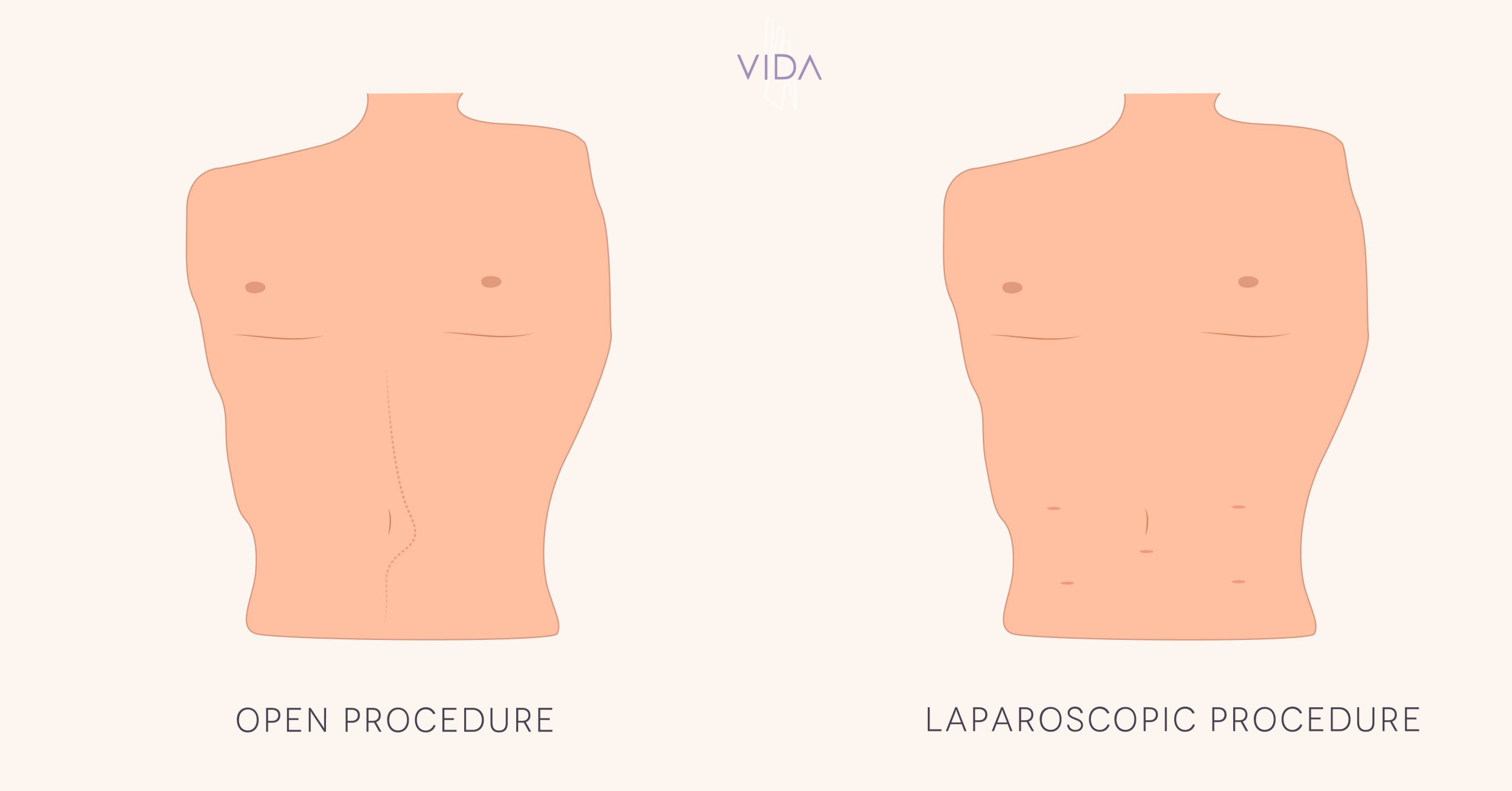Open vs Laparoscopic Weight Loss Procedures
Undergoing weight loss surgery is an option many people consider when they are unable to manage obesity or medical conditions related to gaining weight. As having a higher BMI can leave an individual at risk for conditions such as heart disease, stroke, and diabetes, weight loss surgery is one of the many various procedures that can help someone to lose weight. Weight loss surgery is also known as bariatric surgery. Whatever type of surgery you opt for, it helps you lose weight by reducing how much food you are able to eat. Some procedures also limit the number of nutrients you can absorb. Here, we’re going to focus on two aspects of weight loss surgery: open weight loss surgery, and laparoscopic surgery, so you can decide which is the best for you.

What Is Open Surgery?
The open aspect of this surgery is where the surgeon makes a large surgical cut on your abdominal wall. This opens your belly, and the gastric bypass is done by working on your stomach and intestine.
Open surgery, commonly known as open bariatric surgery, is where you undergo a procedure where your stomach and small intestine are changed. This limits the food you eat. The process of undergoing open surgery consists of two main steps:
- The surgeon uses staples to divide your stomach into two sections: the stomach part, and the top section, called the pouch, which is where the food goes.
- The second step is bypass surgery, where the surgeon connects a small part of your small intestine to a small hole in the pouch. As a result of the surgery, the food travels from the pouch into the small intestine.
What Are the Benefits of Open Surgery?
There will be times when open surgery is recommended for patients. Open surgery is recommended in the following circumstances:
- When the patient has significant scar tissue and this inhibits access to the stomach and small intestine or obstructs the surgeon’s view.
- If the patient has certain health conditions. If the patient wants laparoscopic surgery, it may prove risky, especially if there are health conditions.
Who Would Benefit From Open Surgery?
Open surgery is gradually decreasing. Partly, this is to do with new technologies making surgery easier, and safer by minimally invasive surgery ( laparoscopy) therefore avoiding large incisions. But there are benefits to having open surgery. For example, there will be times when repairs cannot be made using minimally invasive techniques. There are downsides to having open surgery, such as a longer stay in the hospital and recovery time, as well as the potential for pain during recovery.
What Is Laparoscopic Surgery?
Laparoscopic surgery, also known as keyhole surgery or Minimally Invasive Surgery (MIS), is where 4 to 6 small incisions are made in the abdomen. This kind of surgery has become the gold standard approach for bariatric surgery. In comparison to the more traditional forms of surgery, laparoscopic surgery consists of a tiny camera that is inserted into the body via the incision. Each incision is only ½” wide or smaller and the camera transmits visuals to the surgeons via a computer monitor. This ensures that the surgical instruments are guided into the belly safely. In order to improve the view, Carbon Dioxide is used to inflate the abdomen during surgery and create the space to work
What Are the Benefits of Laparoscopic Surgery?
As laparoscopic surgery is the gold standard, and a preferred option over open surgery, there are numerous benefits for the patient and the professional:
- Smaller incisions reduce the inflammatory response in the body due to the insult of the surgery, traducing to a faster recovery.
- Reduced scarring, ensuring that the patient will heal quicker, and will also benefit their aesthetics.
- Reduced risk of infections. In comparison to traditional open surgery, where there is a higher risk for infections. In addition to this, the reduced hospital stay following the surgery greatly minimizes any chance of infection. This has a positive knock-on effect in terms of your frame of mind. As many people do not prefer to stay in hospital and endure a long recovery, this benefits the patient and the hospital providing the care.
- There is less chance for post-operative pain. Anybody that has experienced open surgery can attest that it can be a painful and emotional experience. Undergoing laparoscopic procedures means reduced handling of the internal organs, reducing any additional pain. With the reduced potential for pain, this means that the patient can get back to normal life sooner. Partly, this is due to the reduced need for analgesia or anesthetic.
- Lower risk of getting a hernia (abdominal wall defect) where an internal part of the body pushes through a muscle weakness.
Who Would Benefit From Laparoscopic Surgery?
On a practical level, many people would benefit from laparoscopic surgery. As there is a reduced surgery time, usually taking between 1and 3 hours, and recovery time of between 2 and 3 weeks (although sometimes up to 6 weeks), this translates to minimal impact on a person’s life. Compare this to open surgery, where recovery can take much longer. Living a busy life means that with minimal downtime, you can get back up and running relatively soon after laparoscopic surgery.
Schedule a Free Bariatric Surgery Virtual Consult Here


In addition to this, for anybody who is wanting to get back to normality quickly, the less-invasive nature of laparoscopic surgery is incredibly beneficial to everybody.
There are benefits to having open and laparoscopic weight loss procedures. And there may be times when it is recommended that you go for one over the other. A specialist will always go through the details with you, which takes place during the consultation. This will determine the best course of action. After all, everybody is different.